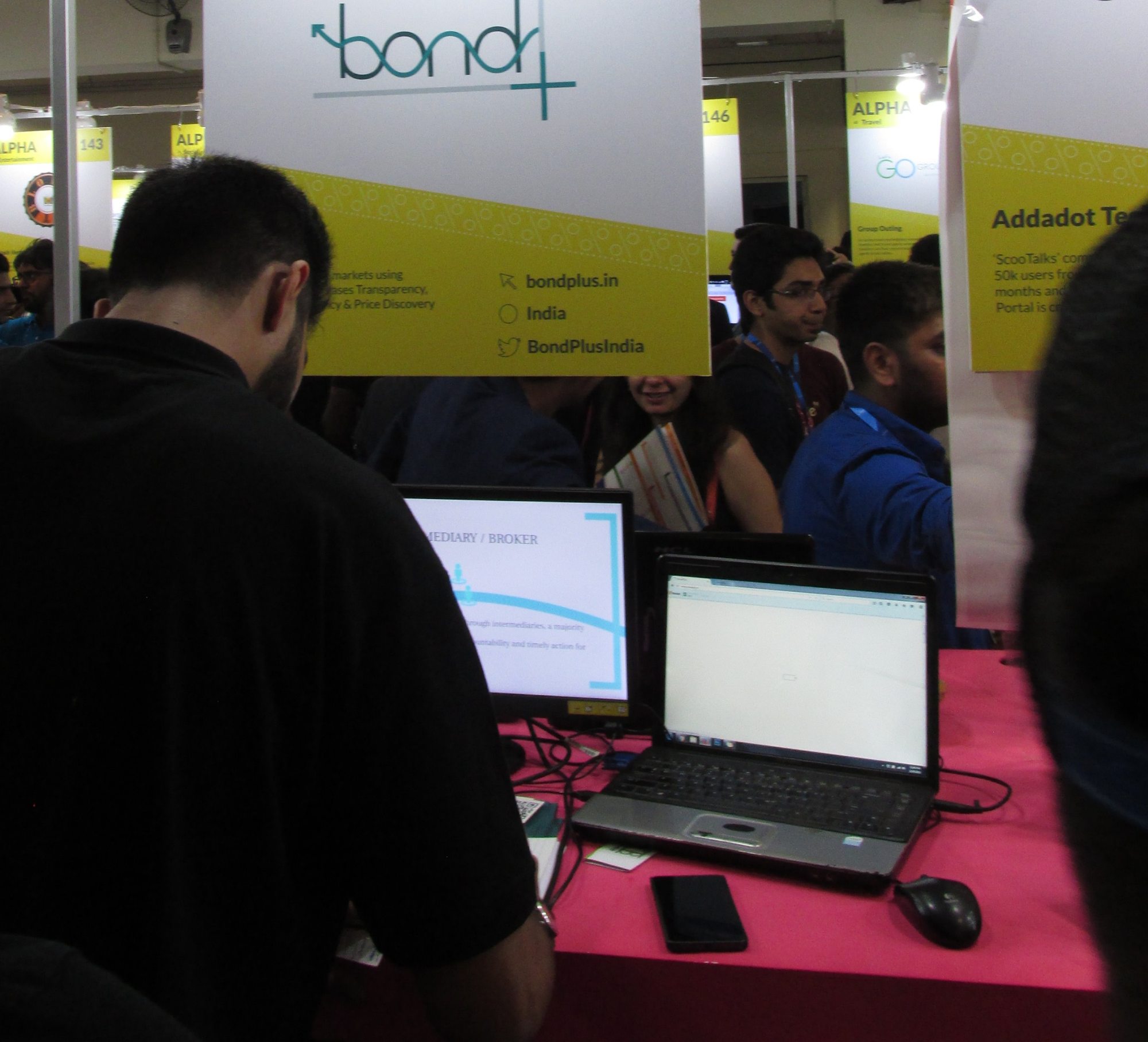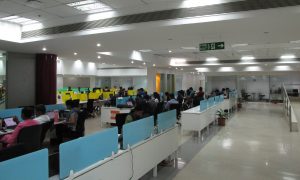Even as the spread of the Internet is poised for a big increase in India, the Information Technology (IT) sector has progressed well. IT stands for design, development, implementation, and management of computer-based information systems, especially software applications and computer hardware. The sector has earned global reputation for efficiency and reliability. Indian IT companies are well-known for adopting the best practices from global counterparts, while benefiting from lower cost of skilled human resources.
In India, IT professional do a wide range of tasks besides software:data management, networking, engineering computer hardware etc. the IT industry is also being integrated with IT enabled services delivered through mobile phones and television.
The Indian IT sector is dominated by some seven large-sized firms, about 80 medium-sized companies, and about 350 emerging players (some estimates put the figure at 700), besides hundreds of small start-up ventures. The growth of the sector was promoted by the Union Government’s computer policy (1984), its Software Export and Development Training Policy (1986), the establishment of NASSCOM (1988), and the setting up of Software Technology Parks (1990). The liberalisation of economic policy of the 1990s triggered foreign direct investment in the sector and promoted high-end offshore services. Global IT firms such as IBM, Motorola, Siemens and Hewlett-Packard, set up their offshore development/research centres in India.
Indian IT companies export software to 95 countries including the USA, UK, Japan, Taiwan, South Korea and Europe. Most of the exports are enterprise applications, followed by technology software. Two-third of the R&D outsourcing has helped the Western companies in solving their high-tech problems. Besides software product development, Indian firms deliver engineering services (15 per cent of their output) and embedded systems (20 per cent). The software products for large customers are custom-based.
The IT Act of 2000 and the National e-governance plans of State governments have promoted the growth of the IT industry. Also the reverse migration of Indian IT professionals from North America following the dotcom burst there gave a fillip to domestic ventures in the field.
The global challenge has nudged Indian’s younger generation to climb fairly fast on the learning curve. A quite a few of them have delivered world class products and come out with innovative solutions to problems and won by merit senior positions in leading corportations at home and abroad. Indian- born entrepreneurs account for 40 per cent of start-ups in the Silicon Valley in the US.
The International Institute of Information Technology, Bangalore has played a pioneering role in raising the bar on IT education in the country in tune with the fast-changing technologies, through innovative syllabi, world class tutorials and incubation centres for budding entrepreneurs.
The long-term partnership with leading vendors such as WIPRO, HCL and MindTree, covers the entire life cycle or products. Indian expertise covers the state-of-the-art practices. For Example, cloud computing is utilised to leverage computing resources from a wider source. Programmers have acquired skills to write code that works well in multicore processors and try innovations in what is known as parallel computing.
One area where special emphasis is given is remote infrastructure management, which today (2013) employs more than one lakh persons. This number is expected to more than triple by 2015. With a view to making Indian undergraduates across the country improve their skills in network planning and management in the light of emerging challenges such as security threats from cloud-based systems, Hewlett-Packard Education Services, and the International Institute of Information Technology, Bangalore have offered special certificate courses.
Indian IT companies such as Infosys, Tata Consulting Services (TCS) and Wipro are world famous. Infosys (founded in 1981) provides business consulting, technology, engineering and outsourcing services. With its headquarters in Bangalore, Infosys has development centres in many countries including the USA, UK, China, Japan and Australia. Its Engineering Services Practice provides many Fortune 500 companies with engineering and technology services to give them a competitive edge. Infosys had been voted as the most admired Indian company for the tenth year in a row by a survey (2011) of companies.
TCS provides IT and outsourcing services. Its business solutions and engineering and industrial services cover a wide field of applications. Its software has helped transform the financial services of firms worldwide.
Wipro (started in 1945 as a consumer-oriented vegetable products company) is another Indian IT major. Entering the It industry in 1981, Wipro soon became a global information technology, consulting, and outsourcing company. Today it has over 900 clients across 57 countries. The services offered cover a wide range: financial, transport, manufacturing, health care, energy telecom etc. it engineering design, infrastructure management and business process outsourcing are widely sought after. Wipro help customers enhance their business capability by leveraging its experience and espertise. It has entered into a partnership with a European research institute to co-innovate and develop systems based on nano-electronics. Wipro’s founder, Mr. Azim Premji is well-known for his philanthropy. He has transferred Rs. 12,300 crores worth of personal shares to his Trust that funds philanthropic activities.
Infosys, TCS and Wipro have entered into a recently emerged technology called data analytics. It involves analysis of enormous chunks of data pertaining to a client (e.g. automobiles or pharmaceuticals) and distilling new insights that would help them enhance their productivity.
Another firm, Cognizant Technology Solutions, which has considerable Indian IT personnel, is described as a global leader in the next generation of IT consulting services. And there are many more successful It companies, which have benefited the countries that have outsourced their services. A recent statement by the Indian envoy in the USA revealed that IT companies had supported 280,000 jobs in that country. The companies had also made 5 billion dollars worth of investments that have contributed to the prosperity of the USA.
Global environment for outsourcing has been marked in recent years by extreme volatility and delayed decision-making in the Western countries. The financial crisis in the global economy has hit the profit margins of Indian It firms. For example, Infosys which relies on the banking, financial and insurance business in the USA and Europe, for more than half its revenues has experienced less than expected profit. TCS, which is more diversified in its services than Infosys, also depends on financial services that account for two-fifths of its revenues.
As a responsible IT player, India is concerned about the increasing e-waste in the world. Production of ever-more hardware has resulted in discarded heaps of printed circuits, plastics and computer chips. India has decided to build a waste disposal facility, to be constructed by a Singapore-based company. It is somewhat surprising that only a small fraction of the global e-waste generated (worth 62 billion dollars annually) is treated at just four plants that conform to the Waste Electrical and Electronic Equipment Directive, set by the European Community.
Recently several constraints facing the IT sector have been pointed out. It is reported that a lack of clear definition of software as a product or service is affecting the investments. Observers say that the value of innovation in this field is also not defined appropriately for tax purposes. Double taxation of domestic software affects their progress. Piracy of domestic software is also an issue to be tackled firlmy. And a proactive policy on promoting the semiconductor industry is called for to reduce the country’s dependence on imports. Moreover, engineering education is not geared towards the requirements of the industry and research output is not world class in many centres. Another weakness relates to the human resource development.
Some of these constraints today may well be passing clouds. The silver lining is seen in the 100-odd centres in rural areas and slums, where computers are placed for the benefit of the deprived. A hidden camera has revealed how children in slums have taken the initiative in learning computing skills, as shown by Dr Sugata Mitra, who won a global award of 1 million dollars for his pioneering project.
Growth of Indian’s IT sector has demonstrated that, given proactive government policies and adequate infrastructure and education, human resources of the country are capable of making it a world leader in this field.




















